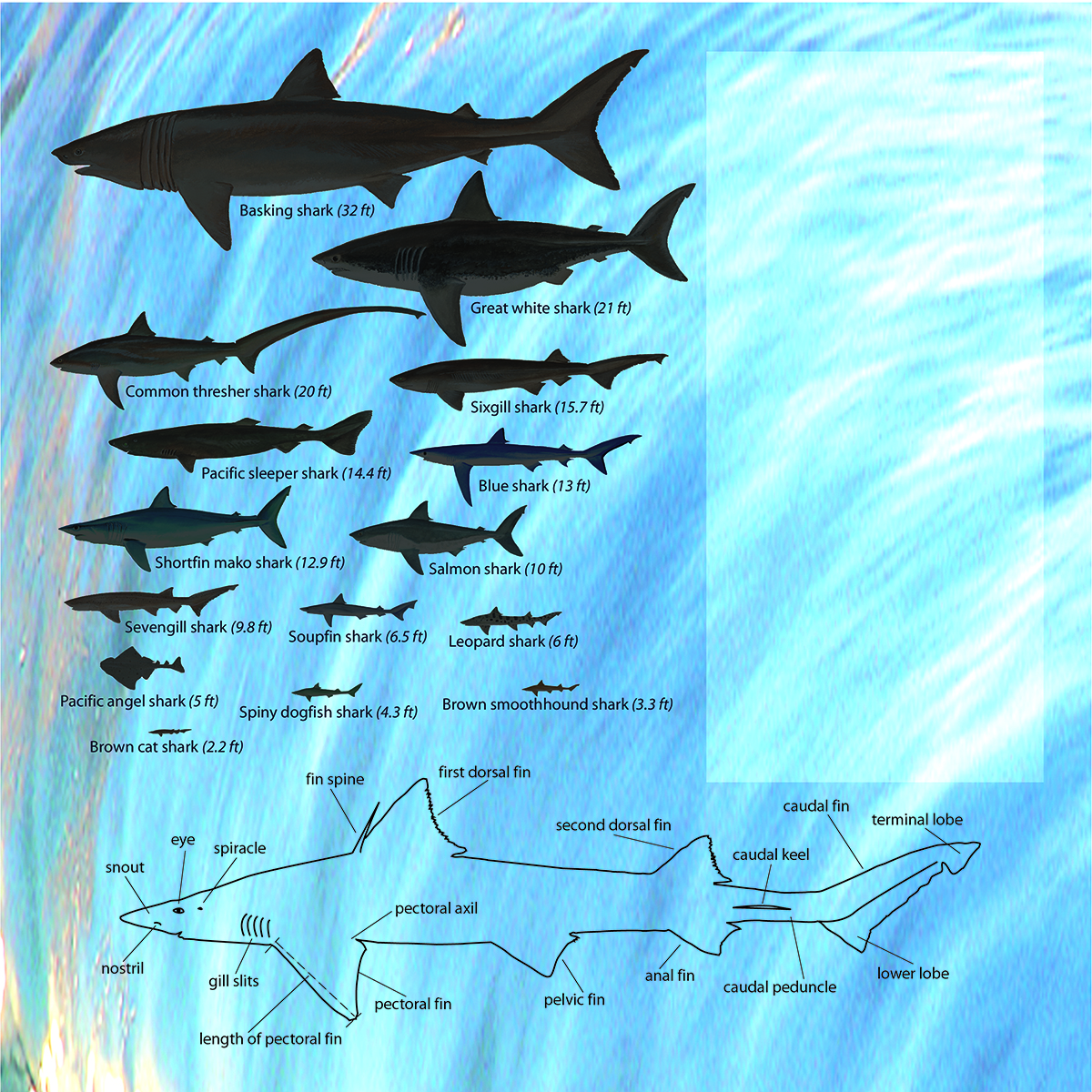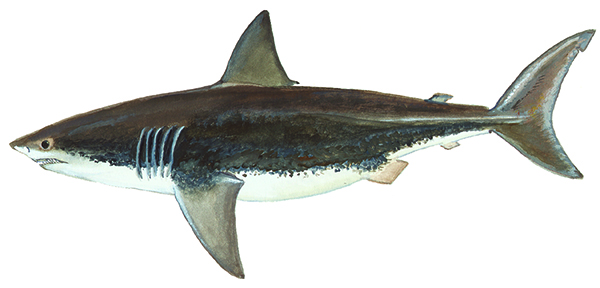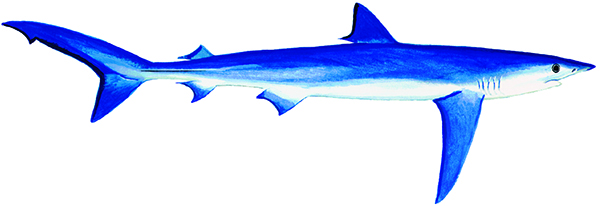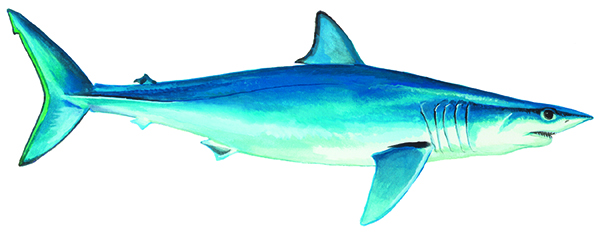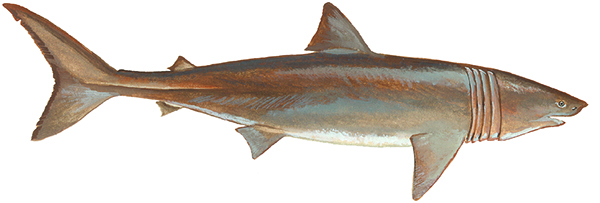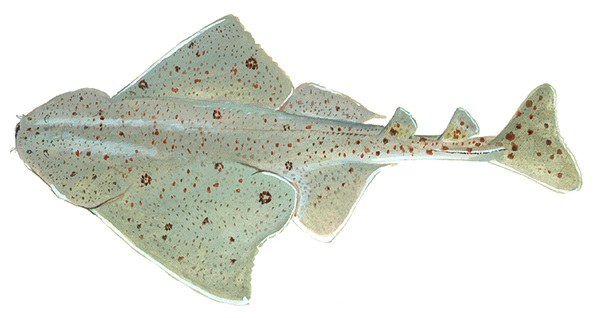Here are some key features to look for in determining what shark you have seen. Not all sharks have all the features outlined here and some will look significantly different. **Images from Sharks of Oregon by Oregon Sea Grant. Artwork by Duane Raver.**
White shark (Carcharodon carcharias)
Large shark with conical serrated teeth and counter-shading (dark on top and white on bottom). Typical size in Pacific Northwest waters is from 9-18 ft. Because they regulate a warm body, smaller white sharks are unlikely to be found in Pacific Northwest. Often confused with salmon shark.
Salmon shark (Lamna ditropis)
Dark splotchy color shading on top and white underside. Large black eye. Key feature is a double caudal keel. Often found stranded on beaches and mistaken for a baby white shark. Up to 300 cm.
Broadnose Sevengill (Notorynchus cepedianus)
Seven gill slits with a large, rounded, flattened head. Back (dorsal) is often covered in dark spots. Only one dorsal fin set far back on body. 70-264 cm.
Blue Shark (Prionace glauca)
A common shark with a slender body and long wing-like pectoral fins. Typically blue on top and lighter underneath. 180-380 cm.
Common Thresher Shark (Alopias vulpinus)
Short head and cone shaped nose. Most noticeable is its long whip-like heterocercal tail used to stun fish. Tail can be 50% of body length. 300-600 cm.
Mako (Isurus oxyrinchus)
Moderately short pectoral fins. Dorsal fin starts behind the pectoral fins. Long narrow conical teeth. Normally metallic blue on top and white underneath. 180-380 cm.
Basking Shark (Cetorhinus maximus)
Large (up to 30+ feet) slow-moving planktivorous shark often seen filter-feeding at the surface. Enormous gill slits for filter feeding.
Leopard shark (Triakis semifasciata)
Recognizable by the dark bands along the back and dark spots. 150-210 cm.
Pacific Angel shark (Squatina californica)
Flattened body, large flat pectoral fins and a mouth at the front of head (as opposed to under the head as in most rays and skates). 100-155 cm.
Brown Catshark (Apristurus brunneus)
Small shark. Long snout with 4 rows of pores on the under side. First dorsal fin starts behind the start of the pelvic fin. Brown coloration with black on fin edges. 55-68 cm.
Brown Smoothound (Mustelus henlei)
Slender body with noticeable spiracle behind the eye. Dorsal fin has thin frayed rear edges. Reddish-brown in color. 65-95 cm.
Spiny dogfish (Squalus suckleyi)
Max size is less than 130cm with two dorsal fins, each with a spine.
School/Soupfin shark (Galeorhinus galeus)
Bluish gray to dark gray. Obvious spiracle behind the eye. Both pelvic and anal fin are the same size. 165-200 cm.
Sixgill shark (Hexanchus griseus)
One dorsal fin far back on the body, six gill slits, and a large broad nose. Teeth on the bottom jaw are very saw-like. 400-482 cm.

